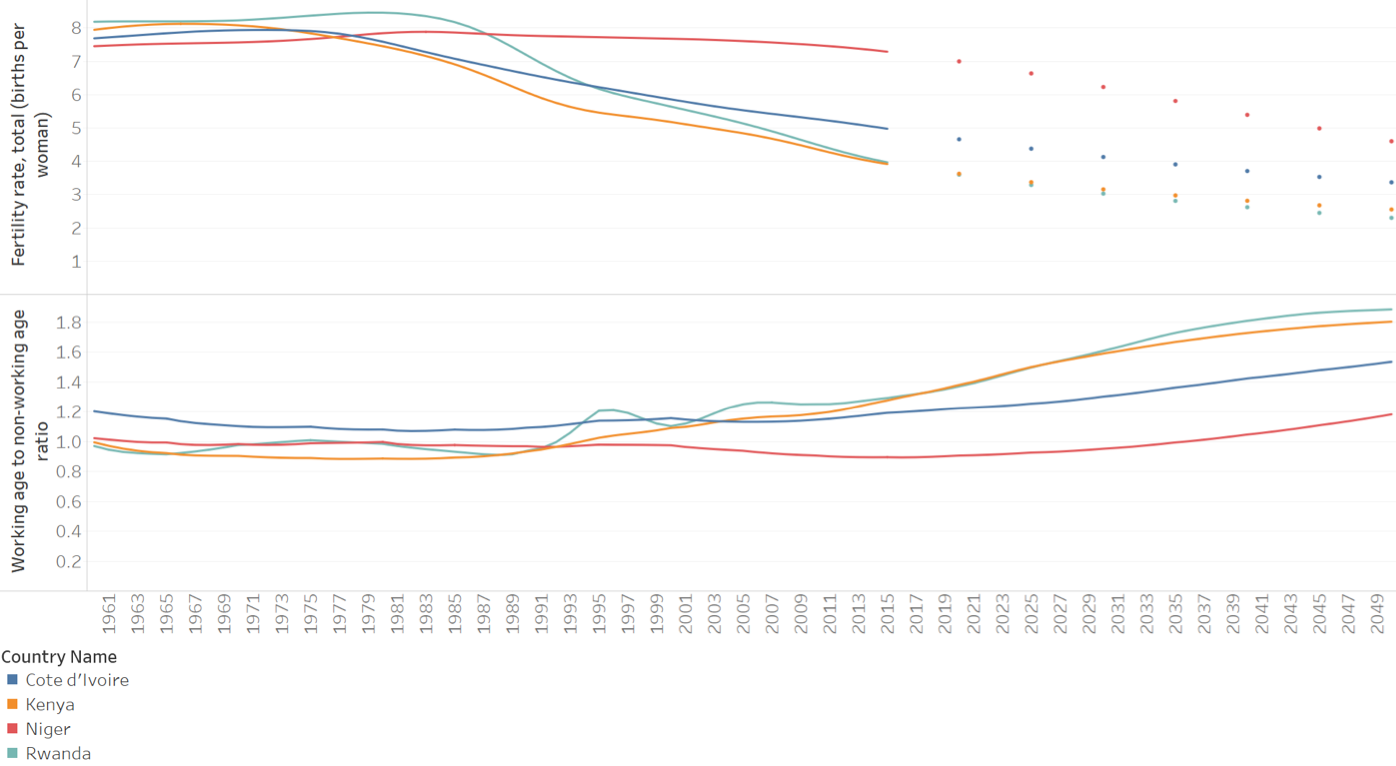What are the 4 demographic dividend stages?
1. Pre-dividend
Pre-dividend is characterized by high mortality, very high fertility rates, a young population age-structure and high level of dependency. Countries in pre-dividend are not reaping any dividend and may be stuck in a ‘pre-dividend trap’. At this stage, investments including immunization, primary health care, and accesses to sanitation and safe drinking water can reduce child mortality support transitions to early-dividend.
2. Early-dividend
Early-dividend is where the dividend is derived. It is characterized by reduced child mortality, high but declining fertility rates, and an increasing ratio of working to non-working age population. Interventions to empower girls through access to secondary education and SRHR services and contraceptives can reduce fertility rates and accelerate demographic change.
3. Late-dividend
Late-dividend is where the maximum demographic dividend is derived. It is characterized by reduced mortality, low fertility, and a working-age population ratio that is growing relative to young dependents. Interventions including sound macroeconomic management, open trade and good governance support continued growth.
4. Post-dividend
Post-dividend is characterized by very low fertility and declining working to non-working age ratio driven by an aging demographic (which primarily applies to rich countries). Investments to promote female and senior work-force participation, welfare system reforms and migration can counter demographic losses from population aging.
Which countries are stuck in a “pre-dividend trap”?
In the absence of significantly accelerated improvements, we estimate that some countries risk losing out on the opportunity of a demographic dividend out to 2020 and beyond. We term these countries “stuck in pre-dividend trap”. The figure shows the estimated dividend trajectories for countries “stuck in a pre-dividend trap”. We calculate that 35 countries are stuck in this trap till 2020-25. The number declines to 27 by 2025-30, and notably all in SSA. By 2030 and beyond the number of countries stuck in the trap declines to 17.
How much of a difference could demographics make to long-run development?
Demographics are typically very long-term trends. To explore the difference demographics make to development, we conduct compare long-run trends across four countries – Rwanda, Kenya, Cote d’Ivoire and Niger. These four countries had similarly high fertility rates and low working/non-working age ratios in the 1960s and 70s. However, they have evolved very differently.
Niger’s fertility rate was lower than the other three at the start of the period. While Rwanda has made significant progress, and Kenya is on a similar trajectory, Niger has had little change in its fertility rate and the rate of decline in Cote d’Ivoire is shallow given the starting point.
As a result, while Rwanda and Kenya have just entered the early dividend stage, we project Cote d’Ivoire will not transition out of pre-dividend till between 2030 and 2035 while Niger is the only country in our sample that will not transition out of pre-dividend till at least 2050.




Recent Comments